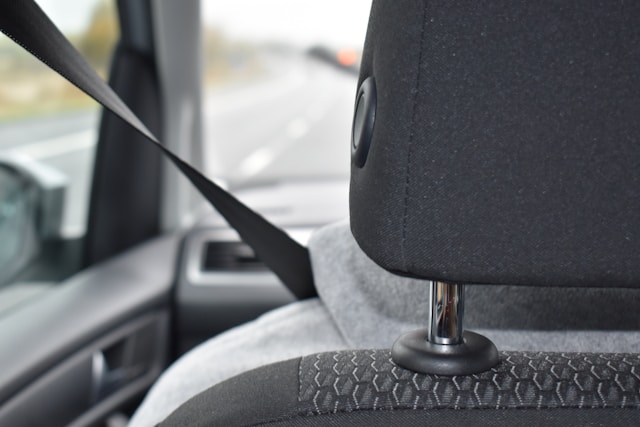Understanding the Perils of Blind Spots
Blind spots have long been an inherent challenge in vehicle design, positioning certain areas around the vehicle outside the driver’s peripheral vision. Without proper mirror adjustment and cautious driving practices, these unseen zones can catalyze collisions. Recent statistics indicate blind spots contribute to 840,000 accidents, including minor scrapes and fatal crashes. Even more staggering is the correlation between blind spots and the over 300 fatalities that are reported each year. These unsettling figures underscore the urgent need for increased vigilance and driver education to adequately address this critical safety concern.
Kicking the proverbial blind spot to the curb requires mirror adjustments, technological aids, and behavioral adaptations. In addition to the strategic placement of mirrors, drivers should also employ consistent shoulder checks and remain acutely aware of the positions of surrounding vehicles, especially in dense traffic scenarios. By instilling these safety-oriented habits, we can reduce the blind spot risk factor and add a valuable precaution to everyday driving.
Aftermarket Solutions for Older Vehicles
While the automotive industry continues to innovate with integrated safety features, older vehicle drivers are included, and the aftermarket has risen to the challenge, providing various solutions to reduce blind spots. Products such as auxiliary mirrors, both convex and dome-shaped, and aftermarket sensor systems offer an added layer of protection, bringing older vehicles closer to contemporary safety standards.
However, drivers seeking to enhance their vehicle’s safety must navigate this vast market carefully, ensuring compatibility and ease of use. Online retailers make the process of selecting the right product more accessible, offering a wealth of options that cater to various vehicle types and driver needs. For example, those with bicycles can significantly improve their road safety to buy bicycle mirrors online, enhancing their visibility and protection against traffic accidents. Installation procedures for these products are typically straightforward. Still, it’s paramount to follow the included guides or seek professional assistance to ensure optimal functionality and reliability of these life-saving devices.
The Evolution of Blind Spot Detection Technologies
The technological landscape of driving safety has evolved dramatically with the continual redesign and improvement of blind spot monitoring systems. Mirrors have made way for sophisticated networks of sensors and cameras, meticulously engineered to alert drivers to hazards that lie beyond their vision. From the first introduction of blind spot mirrors to modern vehicles that provide auditory and visual warnings, this field’s trajectory of technological progress paints a promising picture for motorists’ future safety.
Current high-end vehicles often come equipped with systems that alert drivers of nearby obstructions and take corrective action to avoid potential collisions. These intuitive technologies represent a significant leap forward in vehicle safety features and highlight the automotive industry’s commitment to mitigating blind spot dangers. In this journey towards risk reduction, we have seen exceptional breakthroughs, including implementing radar and camera-based systems that provide a 360-degree view around the vehicle, promoting a safer driving experience for everyone on the road. Pioneering advancements like these hint at a future where vigilance is enhanced by vehicles capable of perceiving threats faster than human reflexes.
Preventive Measures and Driving Best Practices
Optimizing mirror settings is a prime factor in eradicating the blind spot dilemma. Each mirror should be positioned to extend the driver’s field of vision, permitting a seamless transition between the rearview and side mirrors with minimal head movement. The goal is almost to eliminate the blind spot, notably decreasing the vulnerability to side-swipe incidents, particularly during lane changes. Defensive driving practices such as the shoulder check or head turn are equally crucial, particularly before executing any lane change maneuvers.
Education is the cornerstone of promoting these preventive measures. Driving instruction programs strongly emphasize executing these practices, ingraining the proper techniques into the habits of both new and seasoned drivers. This foundational awareness ensures that as drivers venture onto the roads, they are equipped not only with the knowledge to manage their own vehicle’s blind spots effectively but also to remain aware of the blind spots of other vehicles on the road. By creating a driving force of well-informed and conscientious drivers, we contribute to the overarching aim of road safety.
Incorporating Modern Technology into Driver Education
Integrating advanced technology into driver education programs is increasingly becoming a cutting-edge trend. Simulators and virtual reality settings provide a constructive platform for new drivers to familiarize themselves with various driving scenarios, including properly handling blind spots. These immersive training environments offer the opportunity to practice vital skills in a consequence-free environment, effectively preparing drivers for the challenges of the real world.
Licensing authorities recognize the importance of modern technological understanding and consider incorporation into official driving assessments. This evolution in driver testing reflects a proactive approach to adapting to the rapidly advancing automotive landscape and ensuring newly licensed drivers know the technology they may encounter on the roads.
The Human Element: Behavior and Blind Spot Accidents
The human element is an inextricable aspect of driving safety. Psychological factors such as distraction, fatigue, and complacency can significantly impede a driver’s ability to respond to the challenges blind spots present. The stark reality is that human error accounts for a substantial proportion of traffic mishaps, pinpointing a crucial area for intervention. Encouraging driving behaviors that honor patience and attentiveness could dramatically reduce the prevalence of accidents, fostering a road environment guided by mutual respect and proactive safety precautions.
Studying past blind spot-related accidents provides a valuable learning experience. Dissecting these incidents reveals common themes, highlighting critical moments where proper blind spot awareness could have prevented the unfortunate outcomes. These real-life examples serve as compelling narratives in driver safety education, stressing the pivotal role of fully engaged driving in upholding road safety standards.
Legislative Measures for Safer Roads
In pursuing safer roads, the legislation is an authoritative framework guiding vehicle safety standards. Updated regulations increasingly call for blind spot monitoring technology in new vehicle models. These legal measures signify a commitment to public safety and enact a universal standard that uplifts the safety protocols across the board.
Examining the broader spectrum of safety laws reveals a pattern of global prioritization of road safety. These regulations demonstrate a concerted effort to mitigate the risks associated with blind spots and thereby enhance the overall safety of vehicular transportation. A deeper exploration into how different nations approach vehicle safety underscores the potential for cross-border collaboration and the sharing of best practices, contributing to an international safety ethos that aligns with the highest road safety standards.
Public Awareness Campaigns and Advocacy
Advocacy groups and safety campaigns transform public attitudes toward road safety. Utilizing a mix of emotional appeal and factual information, these initiatives aim to reach drivers on a personal level, motivating change and awareness. The effectiveness of such campaigns is evident in the shift in public behavior, which, albeit gradual, signifies progress in the collective consciousness regarding road safety.
Memorable campaigns such as “Check Your Blind Spots” and “Stay Aware, Stay Alive” have resonated with drivers, contributing to more cautious driving habits and increased awareness of blind spots. The success of these movements demonstrates the power of advocacy in galvanizing societal change and reducing the incidence of preventable accidents.
The Impact of Autonomous Vehicles on Blind Spot Safety
The advent of autonomous vehicles marks a potential turning point in the fight against blind spot-related accidents. By taking the wheel from human hands, self-driving cars promise a future where decision-making is driven by algorithms, with comprehensive data as their guide. This automated approach can potentially reduce, if not eliminate drastically, the threat posed by blind spots. With an arsenal of sensors, autonomous vehicles can identify and react to impediments with previously unheard-of precision, signaling a breakthrough in road safety.
The horizon of autonomous driving brings with it new challenges and opportunities. How autonomous vehicles and human drivers interact will shape future safety environments, underscoring the necessity of seamless testing and integration to guarantee that the advantages of this technology may be fully realized without sacrificing safety during the transitional phase.
Collaborative Efforts Towards Zero Traffic Fatalities
The pathway to achieving zero traffic fatalities is complex, demanding technological advancements, education, regulation, and driver vigilance synergy. The amalgamation of these components cultivates an environment where each participant plays a crucial role in sustaining the drive toward achieving this ambitious goal. With each innovative safety feature, new policy, or educational endeavor, we inch closer to a reality where the roadways are devoid of fatalities and severe injuries.
As we witness the amalgamation of such diverse efforts, it is apparent that the quest for improved road safety is a shared pursuit. Through continuous innovation, public engagement, and ethical commitment, achieving safer roads becomes a tangible aspiration rather than an elusive dream. In this collective journey, the diminution of blind spot-related accidents is not just an objective; it’s a milestone that signifies the potential for a safer tomorrow.




